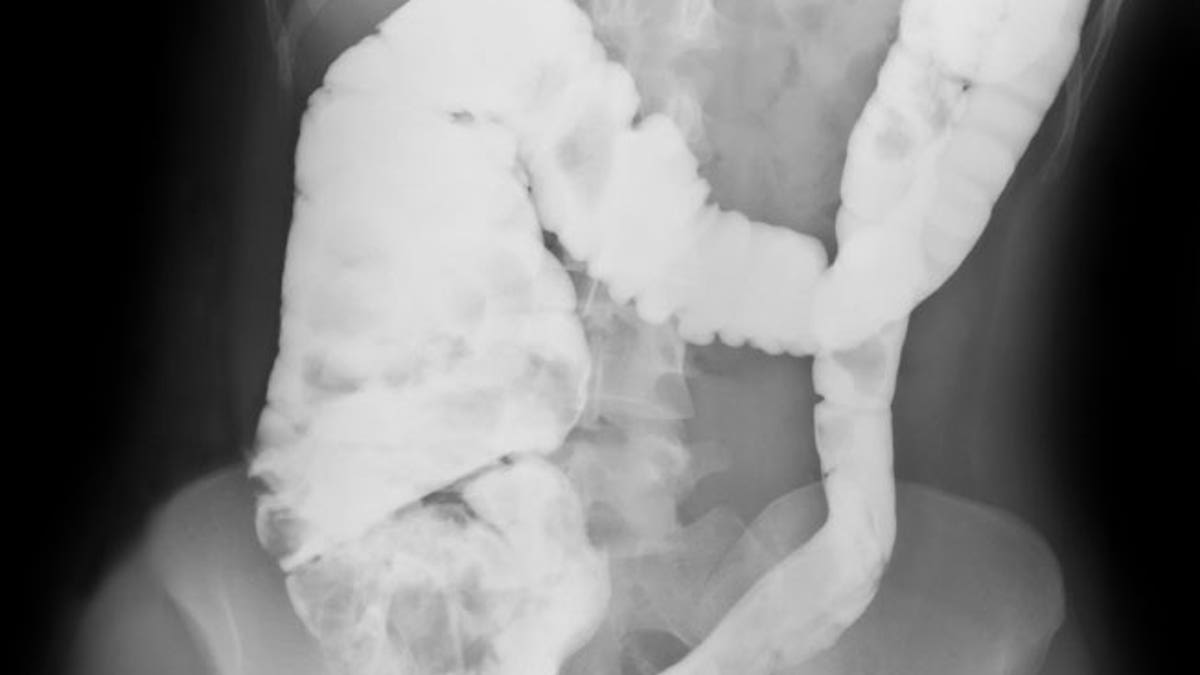
One of the least pleasant aspects of turning 50 is having to get a colonoscopy, a recommended screening test for colon cancer. Not only is the procedure invasive and requires sedation, but you have to drink an awful liquid one to two days before the exam to cleanse your bowels. For these reasons, so few people actually get the screening test and colon cancer remains the second most common cause of death from cancer in developed countries, causing an estimated 50,000 deaths annually in the U.S.
Developing a kinder, gentler alternative could have a huge impact on the number of people who got screened and potentially on those who were successfully treated. One such alternative has been dubbed the ‘virtual colonoscopy,’ which uses an X-ray CT scan and has shown to be effective at catching polyps, particularly larger ones. The CT scan avoids the use of the dreaded colonoscope, but until now, has also required the yucky bowel-cleansing drink.
A new study published in the Annals of Internal Medicine reports on 605 adults at moderate risk for colon cancer who used a laxative-free CT scan, followed a few weeks later by a regular colonoscopy. Subjects adhered to a low-fiber diet for two days, and the scan used computer-aided systems to virtually cleanse the images. The laxative-free CT scan was nearly as good as a regular colonoscopy at detecting larger lesions (the ones most likely to become cancerous) but not as good at detecting smaller suspicious lesions. It identified more than 90 percent of the common polyps that were 10 mm or larger.
While it did not do as well finding smaller polyps, those lesions are less likely to lead to cancers.
“In our trial at the threshold of detecting polyps 8 mm or larger, lax-free CT could identify 70 percent of patients harboring one or more polyps – compared to 88 percent picked up by colonoscopy,” said Dr. Michael Zalis, director of CT colonography at Massachusetts General Hospital, who led the study. “At the level of 6 mm or greater, lax-free CTC identified 59 percent of patients harboring one or more lesions, compared to 76 percent with colonoscopy."
“It’s important to keep in mind that when considering lesions between 6 to 9 mm, only 5 percent of these lesions are advanced adenomas, the most risky” Zalis added.
Though it’s not perfect, it could definitely save lives, according to Zalis.
“We know that screening saves lives, and even some screening is better than no screening,” said Zalis. “Even if the performance of laxative-free CT was not as good as colonoscopy for the smaller, less risky polyps, it still might reduce the barrier to participation for people who are not getting screened at all right now.”
“This study opens the door to eventually offering this type of laxative-free test as a menu option for screening, with the intent of encouraging people who are either unable or unwilling to undergo screening to participate and reap the benefit from screening,” said Dr. Zalis.
